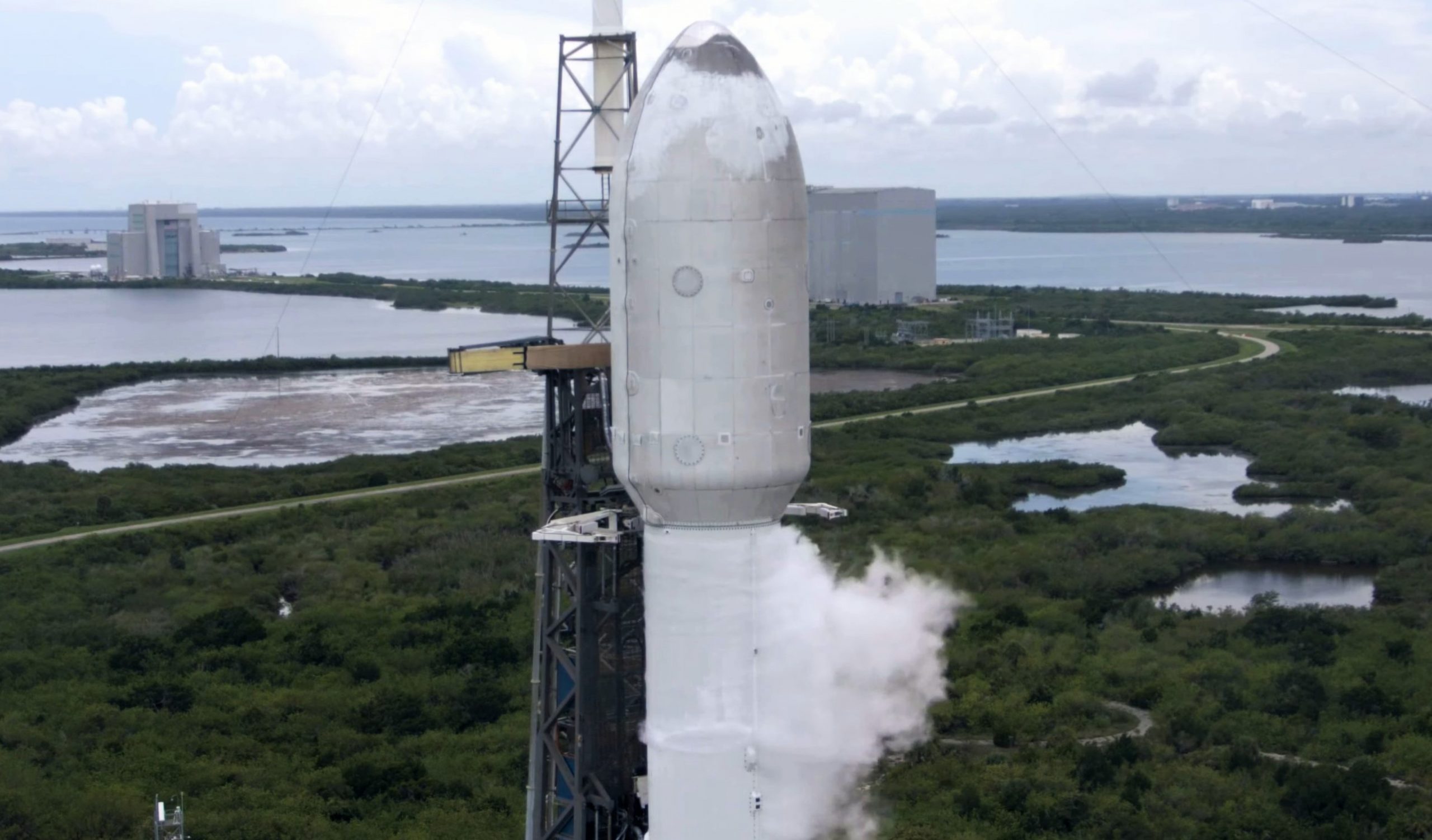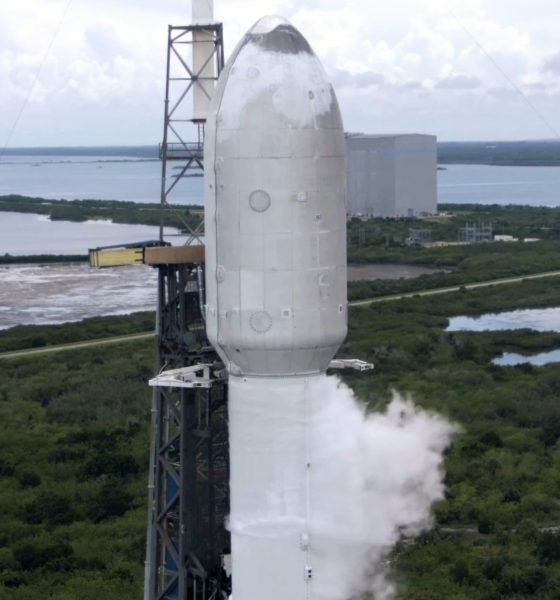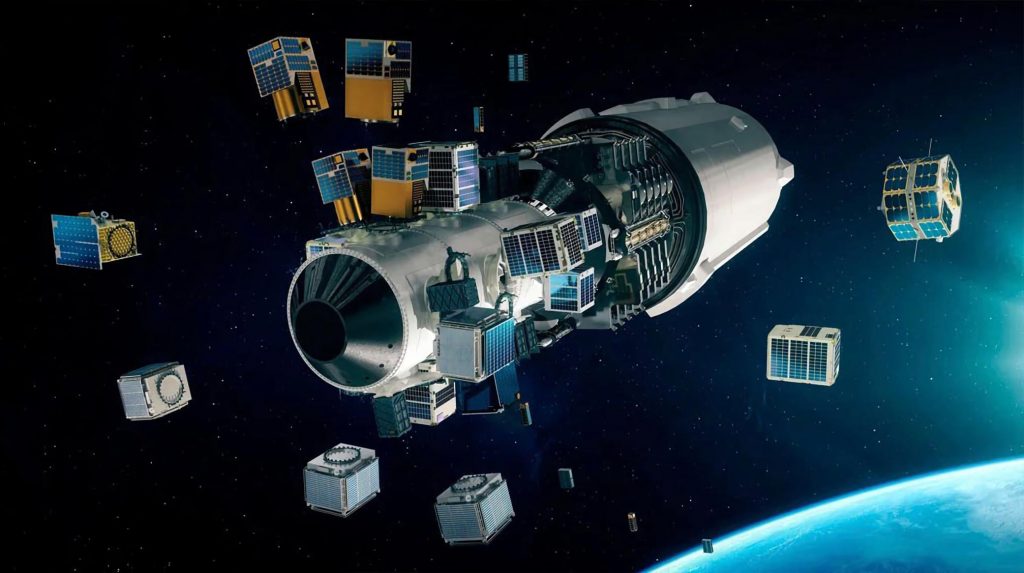

News
SpaceX rideshare launch aborted by rare range violation
Update: In what has become an extremely rare occurrence, a SpaceX Falcon 9 launch was aborted less than a minute before liftoff by a “fouled range.”
Translated, that means that a vehicle or pedestrian of some kind failed to heed strict warnings and entered Cape Canaveral’s launch ‘range’ during a live launch attempt. According to SpaceX’s webcast host, the culprit may have been an aircraft that strayed inside temporarily restricted airspace. Over the last few years, range violations have become rarer and rarer as the East Coast US military wing responsible for managing it, the systems responsible for disseminating ‘keep-out zones,’ and general public awareness have gradually improved.
As SpaceX CEO Elon Musk noted shortly after the rare Falcon 9 launch abort, the keep-out zone figuratively erected before US rocket launches is large, covering hundreds of square miles to hedge against the possibility of an in-flight rocket failure or explosion. Despite SpaceX’s innovative cheerleading of an autonomous flight termination system (AFTS) that would terminate a Falcon rocket the second it departed a much smaller corridor, safety regulations and range management have yet to respond in a significant way. According to Musk, if that status quo remains in place without major reform, “there is simply no way humanity can become a spacefaring civilization.”
Orbit details shared by SpaceX suggest that the company’s second dedicated Smallsat Rideshare launch – known as Transporter-2 – will also carry a second batch of polar Starlink satellites.
SpaceX launched the first batch of ten polar Starlink satellites in January 2021 as part of Transporter-1, co-manifesting them alongside a record-breaking 133 other spacecraft for a variety of companies and institutions. The mission was ultimately a major success, breaking records and demonstrating that SpaceX is serious about its Smallsat Program. Much like company executives promised in 2019 and 2020, SpaceX really does appear to have firm plans for semi-regular rideshare missions that will give customers two or more launch windows per year.
Now scheduled to launch no earlier than 2:56 pm EDT (16:56 EDT) on Tuesday, June 29th, Transporter-2 is the second in a series of Falcon 9 rideshare launches currently scheduled every six months or less over the next several years.
While Transporter-2 wont beat the unprecedented number of satellites launched on on Transporter-1, SpaceX says it will still “launch 88 spacecraft to orbit” and – more importantly – carry more customer mass. In other words, Transporter-2 will carry roughly 50% fewer satellites, each of which will weigh substantially more on average.
Ordering directly through SpaceX, Smallsat Rideshare Program begins at $1 million for up to 200 kg (~440 lb) to Sun Synchronous Orbit (SSO; around 500 km or 300 mi). A majority of small satellites weigh significantly less than 200 kilograms but if a customer manages to use all of their allotment, the total cost of a SpaceX rideshare launch could be as low as $5000 per kilogram – incredibly cheap relative to almost any other option. For a dedicated launch to SSO on a Rocket Lab Electron or Astra Rocket 3.0 rocket using every last gram of available performance, the same customer would end up paying a minimum of $25,000 to $37,500 per kilogram to orbit.
Befitting the premium price tag, a dedicated launch on one of a growing number of small orbital-class rockets does carry benefits like direct orbit insertion, specialized payload handling, and more schedule control. A rideshare with dozens of other satellites is more akin to taking a bus, delivering the lowest prices possible at the cost of strict departure times and a one-size-fits-all approach to drop-offs.

Given that SpaceX’s Transporter program is on track to orbit more than twice as many satellites in six months as Rocket Lab’s small Electron rocket has launched on 17 successful missions spread over more than three years, it’s safe to say that a large portion of prospective smallsat owners and builders have concluded that the cost savings provided by rideshares far outweigh the inconvenience.
Beyond Transporter-2, SpaceX is already working to launch Transporter-3 in December 2021, Transporter-4 as soon as March 2022, Transporter-5 in June 2022, Transporter-6 in October 2022, and at least three other dedicated rideshare launches tentatively scheduled in 2023.

News
Tesla dominates in the UK with Model Y and Model 3 leading the way

Tesla is dominating in the United Kingdom so far through 2025, and with about two weeks left in the year, the Model Y and Model 3 are leading the way.
The Model Y and Model 3 are the two best-selling electric vehicles in the United Kingdom, which is comprised of England, Scotland, Wales, and Northern Ireland, and it’s not particularly close.
According to data gathered by EU-EVs, the Model Y is sitting at 18,890 units for the year, while the Model 3 is slightly behind with 16,361 sales for the year so far.
The next best-selling EV is the Audi Q4 e-tron at 10,287 units, lagging significantly behind but ahead of other models like the BMW i4 and the Audi Q6 e-tron.
GOOD NEWS 🇬🇧 Tesla is absolutely crushing the UK electric vehicle market in 2025 💥
The numbers are in, and the dominance is clear. With an impressive amount of 42,270 vehicles delivered year-to-date, the brand now commands a solid 9.6% market share of the total auto market 🆒… pic.twitter.com/dkiGX9kzd0
— Ming (@tslaming) December 18, 2025
The Model Y has tasted significant success in the global market, but it has dominated in large markets like Europe and the United States.
For years, it’s been a car that has fit the bill of exactly what consumers need: a perfect combination of luxury, space, and sustainability.
Both vehicles are going to see decreases in sales compared to 2024; the Model Y was the best-selling car last year, but it sold 32,610 units in the UK. Meanwhile, the Model 3 had reached 17,272 units, which will keep it right on par with last year.
Tesla sold 50,090 units in the market last year, and it’s about 8,000 units shy of last year’s pace. It also had a stronger market share last year with 13.2 percent of the sales in the market. With two weeks left in 2025, Tesla has a 9.6 percent market share, leading Volkswagen with 8 percent.
The company likely felt some impact from CEO Elon Musk’s involvement with the Trump administration and, more specifically, his role with DOGE. However, it is worth mentioning that some months saw stronger consumer demand than others. For example, sales were up over 20 percent in February. A 14 percent increase followed this in June.
News
Tesla Insurance officially expands to new U.S. state
Tesla’s in-house Insurance program first launched back in late 2019, offering a new way to insure the vehicles that was potentially less expensive and could alleviate a lot of the issues people had with claims, as the company could assess and repair the damage itself.

Tesla Insurance has officially expanded to a new U.S. state, its thirteenth since its launch in 2019.
Tesla has confirmed that its in-house Insurance program has officially made its way to Florida, just two months after the company filed to update its Private Passenger Auto program in the state. It had tried to offer its insurance program to drivers in the state back in 2022, but its launch did not happen.
Instead, Tesla refiled the paperwork back in mid-October, which essentially was the move toward initiating the offering this month.
BREAKING: Tesla Insurance has just officially launched in Florida.
This is the first new state to receive @Tesla Insurance in more than 3 years. In total, Tesla insurance is now available in 13 U.S. states (map in thread below of all the states).
Tesla Insurance in Florida uses… pic.twitter.com/bDwh1IV6gD
— Sawyer Merritt (@SawyerMerritt) December 17, 2025
Tesla’s in-house Insurance program first launched back in late 2019, offering a new way to insure the vehicles that was potentially less expensive and could alleviate a lot of the issues people had with claims, as the company could assess and repair the damage itself.
It has expanded to new states since 2019, but Florida presents a particularly interesting challenge for Tesla, as the company’s entry into the state is particularly noteworthy given its unique insurance landscape, characterized by high premiums due to frequent natural disasters, dense traffic, and a no-fault system.
Annual average premiums for Florida drivers hover around $4,000 per year, well above the national average. Tesla’s insurance program could disrupt this, especially for EV enthusiasts. The state’s growing EV adoption, fueled by incentives and infrastructure development, aligns perfectly with Tesla’s ecosystem.
Moreover, there are more ways to have cars repaired, and features like comprehensive coverage for battery damage and roadside assistance tailored to EVs address those common painpoints that owners have.
However, there are some challenges that still remain. Florida’s susceptibility to hurricanes raises questions about how Tesla will handle claims during disasters.
Looking ahead, Tesla’s expansion of its insurance program signals the company’s ambition to continue vertically integrating its services, including coverage of its vehicles. Reducing dependency on third-party insurers only makes things simpler for the company’s automotive division, as well as for its customers.
News
Tesla Full Self-Driving gets sparkling review from South Korean politician
“Having already ridden in an unmanned robotaxi, the novelty wasn’t as strong for me, but it drives just as well as most people do. It already feels like a completed technology, which gives me a lot to think about.”

Tesla Full Self-Driving got its first sparkling review from South Korean politician Lee So-young, a member of the country’s National Assembly, earlier this week.
Lee is a member of the Strategy and Finance Committee in South Korea and is a proponent of sustainable technologies and their applications in both residential and commercial settings. For the first time, Lee was able to utilize Tesla’s Full Self-Driving technology as it launched in the country in late November.
Her thoughts on the suite were complimentary to the suite, stating that “it drives just as well as most people do,” and that “it already feels like a completed technology.”
드디어 오늘, 서울에서 테슬라 FSD 체험 했습니다.
JiDal Papa님의 모델S 협찬에 힘입어^^ 파파님 정말 감사합니다.
국회 -> 망원시장 -> 홍익대 -> 국회 복귀 코스였고요.
이미 무인 로보택시를 타봐서 그런지 신기함은
덜했지만, 웬만한 사람만큼 운전을 잘하네요.이미 완성된 기술이라고… pic.twitter.com/8pAidHBpRG
— 이소영 국회의원 (Soyoung Lee) (@im_soyounglee) December 17, 2025
Her translated post says:
“Finally, today I got to experience Tesla FSD in Seoul. Thanks to the Model S sponsored by JiDal Papa^^, I’m truly grateful to Papa. The route was from the National Assembly -> Mangwon Market -> Hongik University -> back to the National Assembly. Having already ridden in an unmanned robotaxi, the novelty wasn’t as strong for me, but it drives just as well as most people do. It already feels like a completed technology, which gives me a lot to think about. Once it actually spreads into widespread use, I feel like our daily lives are going to change a lot. Even I, with my license gathering dust in a drawer, don’t see much reason to learn to drive a manual anymore.”
Tesla Full Self-Driving officially landed in South Korea in late November, with the initial launch being one of Tesla’s most recent, v14.1.4.
It marked the seventh country in which Tesla was able to enable the driver assistance suite, following the United States, Puerto Rico, Canada, China, Mexico, Australia, and New Zealand.
It is important to see politicians and figures in power try new technologies, especially ones that are widely popular in other regions of the world and could potentially revolutionize how people travel globally.








